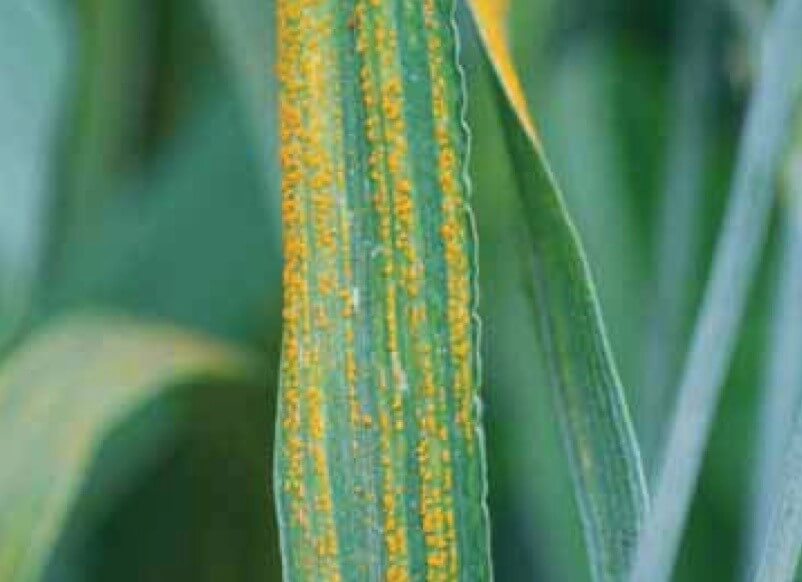If you haven’t noticed in your fields or by word of mouth, stripe rust in wheat has recently emerged as a serious threat to wheat production in Kansas. Recent rainfall across Kansas is beneficial to the wheat crop, but also increases the risk of stripe rust activity in wheat. Stripe rust was already established at low levels in many areas of central Kansas (including many surrounding counties of Tyree Ag) before the rain but has spread quickly after the days of moisture. According to K-State Research & Extension, stripe rust has been reported in Kansas for decades, but its severity varies year-to-year depending on the weather conditions and rainfall amounts. Symptoms of strip rust include long stripes of small yellow or orange blister-like lesions called pustules. The disease primarily occurs on the leaves; however, glumes and base of the awns also can be affected. The lesions produce massive amounts of spores that are easily dislodged. Read more about Wheat Stripe Rust and Managing Wheat Growth by Stage by following the links below.
K-State Research and Extension - Wheat Stripe Rust
Purdue University - Managing Wheat Growth by Stage

Wheat Stripe Rust
Photo taken from K-State Research and Extension
Quick Facts
- Stripe rust typically produces yellow or orange blister-like lesions that re arranged in stripes. The disease is most common on leaves but also can affect glumes and awns of some varieties.
- The fungus that causes stripe rust rarely survives the winter in Kansas and must be reintroduced from overwintering locations each season. Outbreaks of severe stripe rust in Texas and Oklahoma often indicate high risk of disease in Kansas.
- Planting disease-resistant varieties can effectively control stripe rust. A recent change in the stripe rust population has reduced the resistance of many popular varieties.
- Foliar fungicides also can be used to control the disease. The most effective fungicide applications are typically applied at the boot stage of crop growth and provide protection of the upper leaves during the early stages of grain development. Products containing a triazole fungicide are considered the best option when the disease is established in a field.
Treatment – Fungicide Application
Foliar fungicides can effectively control stripe rust. According to K-State Research and Extension, when fungicides are applied to the crop at the boot stage of development, the fungicides should provide protection for the upper leaves that contribute most of the energy used to produce grain. Many products have specific use restrictions and may be present on the amount of active ingredient that can be applied within a period of time or on the number of sequential applications that can occur. Use of the fungicides have been approved by the EPA (United States Environmental Protection Agency).
____________________________________________________________________
Contact Tyree Ag today to discuss which fungicide
product is best to meet your needs.

Toll Free: 866-897-3324
*Current customers please contact your salesman or call the office, where your information
will be given to a salesman who will contact you directly.
________________________________________________________________________
How does stripe rust impact wheat yield?
There will be a yield loss to those fields that are impacted by stripe rust. This disease can reduce the number of kernels per spike, test rates, and kernel quality. These yield losses will then impact the farmers who produce the world’s food and overall decrease wheat yield across all producers.
*Information for this blog was taken from K-State Research and Extension and Purdue University (both files attached through the links above).
KP
